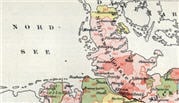Source Information
Sammlung von Urbarien und Konskriptionen. Bestand (Inv. 75). Arhivele Naţionale ale României, Bucharest, Romania.
About Sibiu, Romania, Military Conscriptions, 1689-1807
About this collection
This collection consists of military conscription records from selected Romanian communities with German populations. It covers the years 1689 up to and including 1807. The conscription place names are typically listed in German, Romanian, and Hungarian. They include, among others, Hermannstadt/Sibiu/Nagyszeben, Kerz/Cîrța/Kerc, Leblang/Lovnic/Lemnek and Mühlbach/Sebeș/Szászsebes.
The city of Sibiu is situated in the center of Romania near the Southern Carpathian mountain range and about 160 miles northwest of the capital Bucharest. Found within the city is an area known as the "Königsboden" (King's Base). This historic location, populated by Transylvanian Saxons, was autonomous for 700 years until 1867. By the 12th century in Transylvania (Siebenbürgen in German), Sibiu was already the most important Saxon municipal and political center. Transylvanian Saxons are the oldest still existing group of German settlers in Eastern Europe. In this case, the term Saxon doesn't necessarily refer to a settler's place of origin, rather, it was used to designate various waves of German colonists.
In the 18th century, Sibiu became the capital of the area known as the "Grand Principality of Transylvania" which was a realm of the Habsburg monarchs of Hungary. Managed from Vienna, officials there attempted to introduce reliable bureaucratic standards in order to increase tax revenues. This led to conflicts with priviledged estate holders many of whom were Transylvanian Saxons. In 1781, Emperor Joseph II issued a edict intended to end exclusivie Saxon settlement rights, but this met with great resistance.
For residents of some German comunities, these conscription documents may also record their taxable properties and posessions. The records, then, can become a source for tracking over the years the fluctuations in wealth of families in these areas.
What you can find in the records
Pages are handwritten in mostly tabular format. Initially, Latin terms were often used, later entries were made in German. Generally the following details may be found:
- Year, Month, Day Recorded
- Last Name, Given Names, sometimes Profession of Citizen
More about using this collection
Under "Browse this collection,” select the desired title and associated location.
 Need help with the German language? Find resources in our German Research Center.
Need help with the German language? Find resources in our German Research Center.